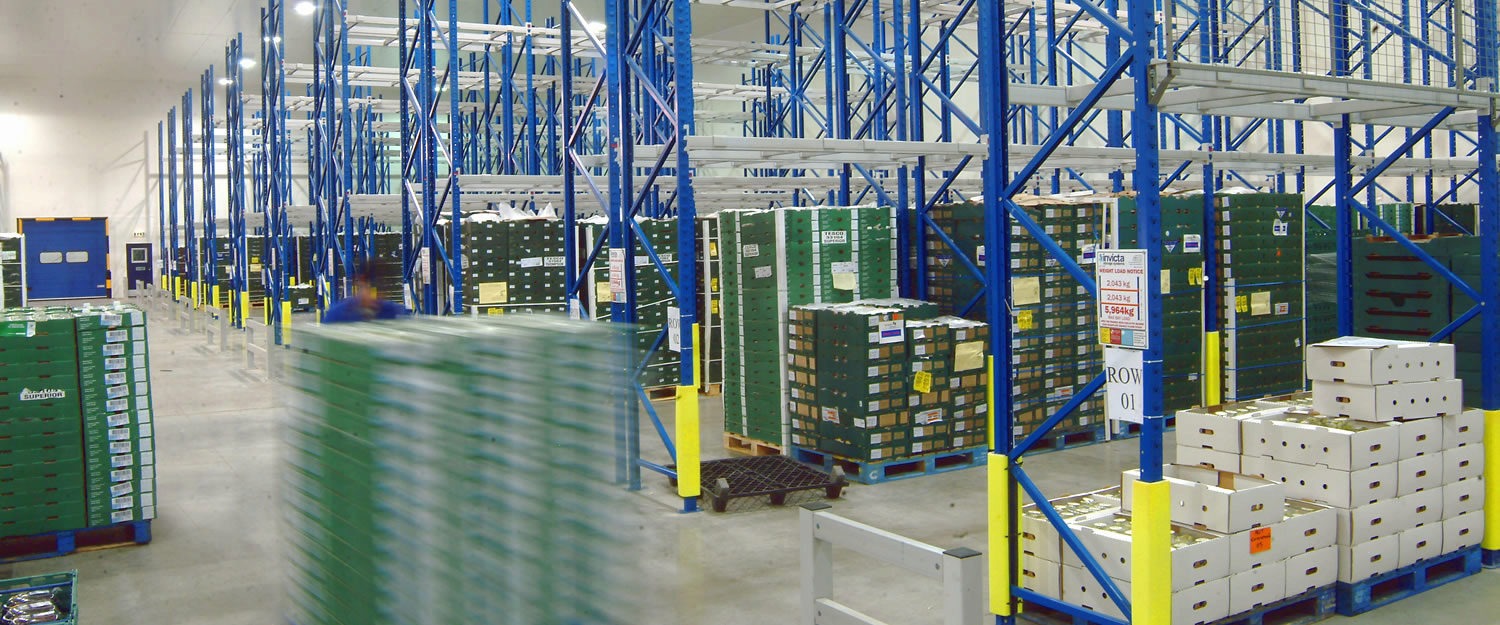For your information
You are being redirected to one of our divisional subsites which contains more detailed information on the required division. To navigate back to the main Invicta Group site, please click the link found in the footer at the bottom of the page.
Trouble With Logistics Makes a Case For Warehouse Expansion
7th January 2020
Driving change
Quick Quote
Contact Mick Coyne
To get a quotation or arrange a free site survey - Call Mick Coyne on
-
 UK
UK
Current location:
Quick Quote
Contact Mick Coyne
-
 UK
UK
Current location:
Logistics is a tumultuous industry at the moment, to say the least. Massively competitive and in constant demand with the rise of eCommerce, the industry is also in uncertain territory. Confidence among UK logistics firms was at its lowest ever point in recent months, with the impending threat of a no-deal Brexit and significant labour shortages.
For businesses relying on logistics firms, this presents something of a quandary. Both the potential problems with the sector and a range of other concerns are leading some to reevaluate their existing relationships, and look at ways to improve their reflexivity. For some businesses, this make make it an ideal time to expand storage internally, whether to stockpile goods or move distribution in-house.
Lagging logistics
The problems with Brexit are fairly well documented, and at this point, probably a little tiresome to listen through. Potential disruption in regards to EU trade – namely manual checks on cargo, additional paperwork and the imposition of tariffs – could raise costs and cause significant delays. These concerns have caused stockpiling, which has filled many warehouses to capacity, as well as expensive preparations for the worst case, no-deal scenario.
However, this is not the sole issue facing the logistics industry, particularly the third-party logistics (3PLs) on which so many businesses rely. One issue is staffing: a dearth of drivers and warehouse workers which is partly blamed on Brexit, but also down to changing expectations and career goals among Millennials and Gen Z employees. Automation is also a point of some contention, with businesses caught in limbo as to whether it’s the right time to invest.
More broadly, however, some 3PL firms have been accused of complacency, with widespread dissatisfaction about the efficiency and responsiveness of some logistics companies. Recent research suggested that a fifth of UK companies had experienced difficulties onboarding their 3PL, citing such issues as “cost, deliverables [and] timing”. Another survey meanwhile revealed that most businesses believe 3PLs are ‘poor’ at introducing new initiatives, with none of the companies polled believing that their 3PL was ‘extremely good’ at this.
Room to manoeuvre
This is not to say that the UK logistics industry is failing, or doomed, or even particularly struggling. The outlook is currently not a positive one, but there are also causes for optimism. Most logistics firms cited in the confidence report state that they expect turnover and profit to grow over the next year, and many also cite the increased interest in environmental issues, with many expecting to invest in sustainability projects. The rise of automation, particularly the promise of self-driving vehicles for long haul – a potential antidote to labour shortages – also bring cause for long term growth.
It’s also true that regardless of the situation logistics firms find themselves in, many businesses will either be unable or unwilling to part with their services. Completely internalising the supply chain simply isn’t an option for most companies, either in terms of the scale of their output or the practicalities of distribution. Many too have perfectly good relationships with 2PL or 3PL firms who are well prepared for Brexit, and have already committed to their Brexit planning.
For those who haven’t already played their hand in regards to Brexit, however – or simply seek a little bit more wiggle room – a tantalising option could be to upgrade their warehouse and distribution spaces. By restructuring an existing space and using higher density storage, it’s possible to greatly increase your capacity while also creating space for things like sorting and packing areas. This can give you the ability to respond to changes in the climate, and potentially take some of the load away from external service providers.
Upscaling storage
For small and medium-sized businesses, third-party logistics services are often used because the business lacks the capacity to store and distribute products from its own premises, and isn’t yet ready or able to move to a larger site. In this instance, upgrading your warehouse racking confers obvious benefits. By switching to a high density racking format such as narrow aisle pallet racking, you could store the same amount of goods in half the space; or conversely, double the amount of storage capacity.
If your primary concern – due to Brexit or anything else – is your capacity to stockpile goods, the additional on-site storage is obviously welcome. If meanwhile your preference is to expand your distribution capacity, bring distribution in-house or just to create space for other uses, switching to high density racking provides you with the flexibility to use the space how you choose. The space you gain from upgrading your racking could be used for additional racking, packing orders, or even converted into an office or training area.
Another aspect of storage and logistics is the safety and security of your products. Recent reports indicate that valuable shipments are increasingly being targeted by thieves, with 3PLs varying dramatically in the security measures and safeguards they employ. By creating additional storage and distribution areas within your premises, you remove a step in the distribution process, and ensure that your goods are stored and sent intact.
Inefficient use of space is common in warehouses, and perhaps the most common of all is unused headspace. Even if you’ve already occupied your floor space with high density pallet racking or other storage, it’s likely that your storage area has a significant amount of vertical space; if it’s cold storage, you may even be cooling this empty air without any reward. In this instance, a mezzanine floor can create entirely new floor space above your racking, which can be used for everything from storage and packing to heavy plant and machinery.
—
This is not to say that upgrading your storage makes sense for every business. For some, it may simply not be viable or cost-effective at this juncture, or simply deemed to be too close to Brexit to enact any more plans for the future. The flexibility that a storage upgrade can provide however – from increasing your capacity to delaying the necessity for new premises – is a boon for many businesses, particularly in an environment where agility will be key.
Accreditations & Affiliations







Start your project
Tell us about your project. Please complete this form. One of our sales team will come back to you with more details. If you prefer, you can drop us an email.




Share/Like this page